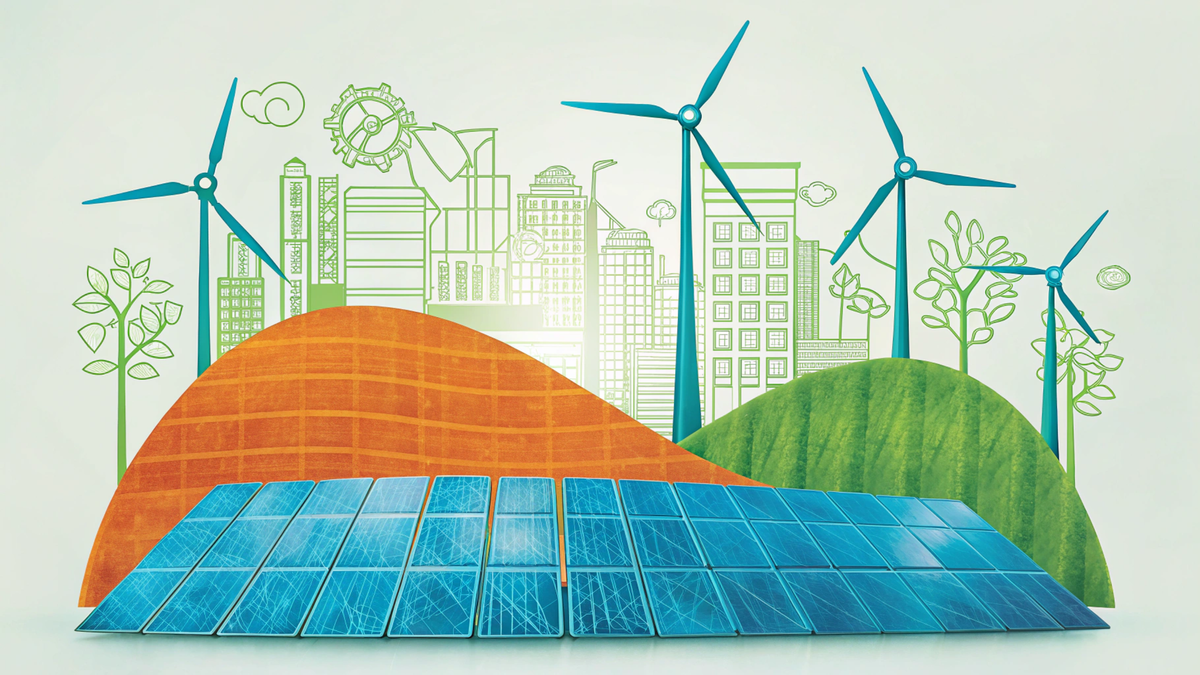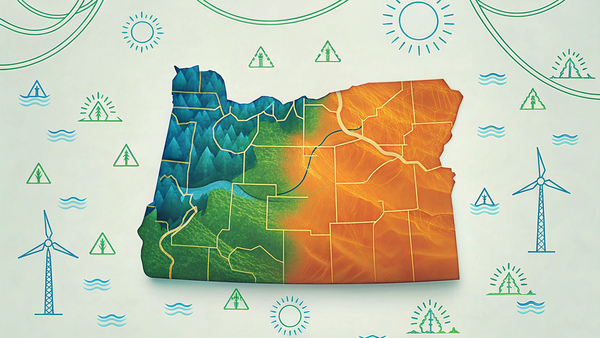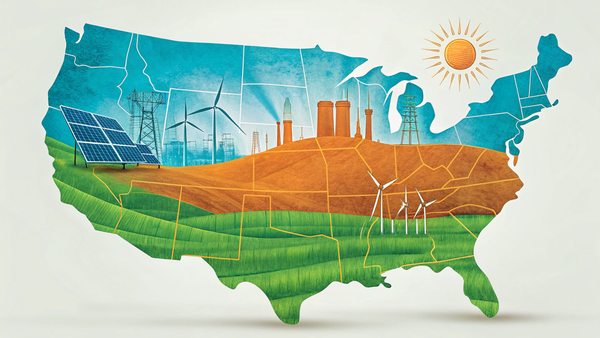Navigating Uncertainty in Electricity Planning
The process of planning electric power systems has always been characterized by uncertainty, but several new forces have emerged that make the resource planning problem more challenging than in the recent past.

Introduction
Uncertainty has always been a part of electricity system planning. For decades, planners have made decisions amid shifting fuel prices, evolving regulations, and imperfect load and technology forecasts. This exercise was comparatively stable during the past two decades with flat load growth and steady or declining resource costs.
But today’s uncertainty is elevated: load is expected to surge and resource costs have escalated due to factors such as supply chain constraints, interconnection and permitting delays, and higher financing costs. Further destabilizing the planning process are the Trump tariffs announced on April 2 and the prospect of repealing clean energy and manufacturing policies, including the Inflation Reduction Act (IRA). The stakes for reliability, affordability, and decarbonization are higher than ever. As a result, the range of potential outcomes in today's landscape is wider than the recent past.
Thus, with a backdrop that leaves planners with very wide error bars for both load growth and resource costs, we need new approaches to ensure reliability and affordability. To demonstrate how to navigate this complex environment, this post:
- outlines how these uncertainties affect load growth and resource costs,
- compares the current environment against the last planning period where electric utilities responded to high expected load growth,
- explains why underbuilding new resources today is a significantly greater risk than overbuilding, and
- showcases Evolved’s expanding toolkit to adapt to the new environment.
Load Uncertainty
Since 2000, growth in electricity consumption across the U.S. has been relatively flat (i.e., less than 1% per year). As a result, the level of uncertainty in load forecasts used for planning was relatively low. This era of flat load growth is behind us and consumption is expected to surge during the next decade and beyond.
EER’s Annual Decarbonization Perspective (ADP) 2024 projects a compound annual growth rate (CAGR) of ~3% from today through 2035 under a scenario reflecting current federal and state policy, well above the growth realized during the past four decades.
Figure 1. U.S. Electricity Consumption: Annual Growth Rate
Load growth is expected to accelerate primarily due to:
- Data center growth to support artificial intelligence (AI) and other technology services.
- Electrification of transportation and building heat.
- Advanced manufacturing of clean energy infrastructure and semiconductor chips.
- Hydrogen production from electrolyzers.
- Oil and gas production and cryptocurrency mining in certain regions.
Electrification rates and growth in manufacturing and hydrogen production are stimulated by policies sponsored by the Biden administration in 2021-2022, including the IRA, the Infrastructure Investment and Jobs Act (IIJA), and the CHIPS and Science Act.
The Trump administration has proposed repealing these laws and issued an executive order in January to freeze IRA and IIJA funding. Repeal or revision would reduce load growth, because zero or lower tax credits mean fewer advanced manufacturing facilities being built, fewer consumers driving electric vehicles, and non-viable economics for electrolytic hydrogen production.
Data centers have already been a major driver of load growth in recent years, particularly in areas of the U.S. such as northern Virginia and Dallas. AI, cloud computing, and digital service demands are expected to continue accelerating, but long-term growth rates and future locations are highly uncertain and contingent on technology company capital expenditure plans. The release of DeepSeek in January has introduced additional unknowns on future data center needs.
Growth rates are expected to vary substantially by region. Figure 2 shows the contribution to growth rates from our 2024 US ADP in four regions: New England, Virginia, Texas, and Southern Great Plains (principally Oklahoma and Arkansas) across relevant scenarios. We show Baseline (reflecting the repeal of IRA) and Current Policy (including IRA) across all zones. Additionally, we show the Central case in New England and Virginia where state climate ambitions drive additional load growth in buildings and transportation.
In Virginia, data centers alone account for more than 4 percentage points of annual growth in the high-end case—more than the total growth rate in some other zones. The Southern Great Plains sees minimal change under Baseline assumptions, but becomes a major growth hub under Current Policy due to potential industrial hydrogen production. In all cases, electrification of vehicles and buildings plays a growing role, but is policy-contingent and spatially uneven. This variability reinforces the need for planning approaches that accommodate deep structural differences—not just between states, but between possible futures.
Figure 2. Contribution to Annual Load Growth, 2024-2035
The recent Trump tariffs compound future load growth uncertainty in four ways:
- Tariffs directly increase the cost of building data centers and manufacturing facilities, which may cause businesses to reduce future capital expenditures.
- Electric vehicles and appliance costs would increase, and consumers may delay or avoid adoption as a result.
- Tariffs are expected to translate into an economic slowdown featuring higher inflation and lower growth (“stagflation”), resulting in lower electricity demand across all sectors.
- Uncertainty about the tariffs themselves – their magnitude and duration – are freezing near-term investment as companies take a wait-and-see approach.
Planning for extreme weather is an additional consideration for load projections since recent events across the U.S. have resulted in actual peak demand differing from forecasts. These conditions occurred across multiple seasons, and the extremes were generally outside the historical normal ranges planned for. Furthermore, they affect the availability of weather-dependent resources (wind and solar) and fuel infrastructure.
Resource Cost Uncertainty
Despite the wide error margins associated with load growth discussed above, resulting demand is still expected to exceed the low growth rates experienced over the past two decades, and investment in new resources will be necessary to maintain reliability. As evident in interconnection queues across the U.S., solar, wind and battery storage resources are expected to address most of this growth.
The potential policy shocks risk cost escalation for these resources:
- Tariffs directly increase the cost of components sourced from countries outside the U.S., and they disrupt supply chains as developers search for alternative suppliers; projects that shift to domestic manufacturers will likely pay a domestic cost premium. Key inputs, such as rare earths from China, may be embargoed in an ongoing trade dispute.
- The potential loss of tax credits from an IRA repeal will reduce investment and increase the cost of the projects that are still developed.
Wind and solar PPA prices exhibited declining costs for over a decade but have stabilized or increased since 2021 due to factors such as higher financing costs, supply chain constraints, and interconnection and permitting delays. Capital costs are expected to resume declining in the long term, but tariffs and tax policy changes would alter the timing of cost normalization.
New gas-fired resources are also expected to meet growing energy and capacity needs, and approximately 40 GW of capacity is planned for development through 2030. However, gas turbine supply is currently limited and demand is high, and this imbalance has resulted in higher gas-fired resource costs and longer development timelines. For example:
- PJM’s recent (pre-tariff) cost estimate for a new gas-fired combined cycle resource is approximately 45% higher in real dollars relative to a 2022 estimate. Tariffs would further add costs, disrupt supply chains and extend timelines.
- John Ketchum, NextEra’s CEO, summarizes these current dynamics by noting that the utility’s last gas-fired combined cycle completed in 2022 cost $785/kW, the same resource would cost $2,400/kW to build today, and tariffs would increase the cost to $2,600-2,800/kW.
Fuel costs, a major component of gas-fired generation costs, are volatile and could be affected by federal energy policy and tariffs. Exports of liquefied natural gas (LNG) have grown considerably during the past decade, and the Trump administration supports further expansion. U.S. trade partners may choose to import additional U.S. LNG to narrow trade gaps as part of tariff negotiations, and higher LNG exports would likely increase domestic natural prices and electric power sector fuel costs.
Other supply-side resource options include nuclear, geothermal, and a suite of long-duration energy storage technologies. They will all likely play a role in a long-term decarbonized electricity system, but they face hurdles to scale in the near term, such as long development timelines, permitting challenges, technology uncertainty, and cost uncertainty related to tax credits and tariffs.
Other promising solutions to help meet load growth include demand-side resources, such as virtual power plants that aggregate flexible loads and distributed energy resources, and technologies that improve the existing transmission system (e.g., grid-enhanced technologies, or GETs). These solutions are promising paths to pursue regardless of the uncertainties outlined here, and the priority is retaining existing supply and pursuing supply-side resources with domestic supply chains and/or faster development timelines.
This Time It’s Different
The “new normal” of wide error bars around load growth and resource cost is challenging, but planning reactively, such as waiting for new load to be realized, is risky. Although there are concerns about overbuilding capacity, the risk in today’s environment is asymmetric: underbuilding new resources is a significantly greater risk than overbuilding. To help explain why, we compare the current situation against the last planning period where electric utilities built excess generating capacity in response to projected load growth.
Following steep load growth in the 1960s, electricity planners assumed similar growth in the future, and utilities constructed large-scale coal and nuclear resources in the 1970s and 1980s. Actual load growth was lower after the oil price shocks, and utilities were left with excess capacity and stranded costs. Today’s environment is different:
- At the beginning of 1973, approximately half of U.S. generating capacity was built in the prior decade (1963-1972). Today, the capacity-weighted age of generating units is nearly 30 years old, and about one-third of capacity at least 40 years old. In other words, today’s infrastructure is aging and will need to be replaced.
- Technologies such as solar and battery energy storage can be scaled more easily, have project lives between 20 and 30 years, and have relatively low development times. Coal and nuclear plants were incredibly large in size (often requiring multiple utilities as off takers), had quite long construction times, and were expected to be online at least 40 years.
- Wind and solar resources are primarily energy resources (i.e., low-capacity value), which means that if load growth does not materialize, the system still avoids fuel from thermal resources. In many regions, renewable penetrations are low and can integrate additional resources relatively easily.
- There is spatial flexibility where load comes online, since future data centers and hydrogen production can be sited where electricity supply is available. In contrast, appliance adoption (e.g., air conditioners and freezers) was a major driver of load growth in the 1960s.
Conclusion
The fundamental goal of planning is to ensure that the future electricity system is reliable and affordable for customers. At the present time, planning reserve margins across many areas of the U.S. are shrinking, and capacity prices in organized markets are increasing. Concurrently, average electricity rates are rising, particularly for residential customers, and this is largely attributable to transmission and distribution (“T&D”) investments. This backdrop means that optimal resource (“G”) investment is urgent to meet planning goals.
At Evolved, we’re expanding our modeling toolkit to address this deep uncertainty head on. We’re investing in tools like Ensemble and AI not to predict a single future, but to explore a range of plausible outcomes and test decisions against them. This lens helps us identify strategies that hold up under stress—not just in ideal conditions.





